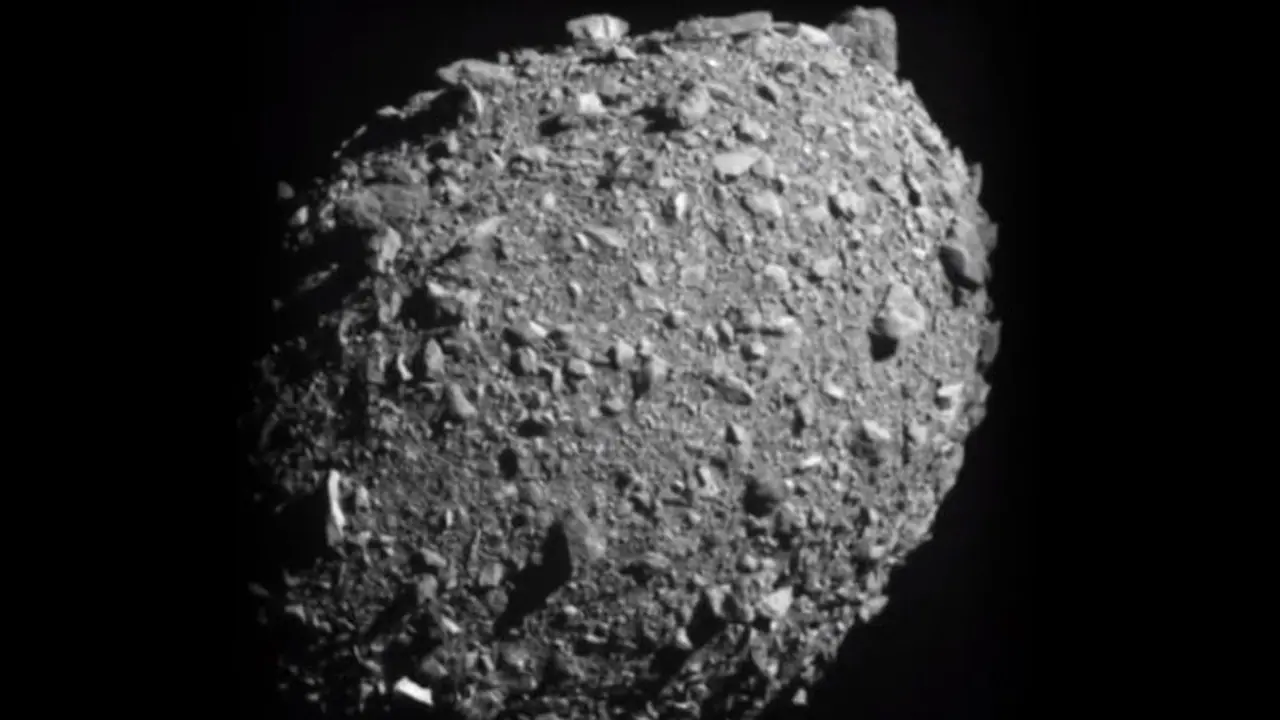In a first-of-its-kind mission, the Double Asteroid Redirection Test (DART) spacecraft successfully crashed into an asteroid to test whether space rocks that might threaten Earth in the future could be nudged safely out of the way. NASA’s DART mission is a step towards preparing the world for a potential future asteroid strike, said the Indian scientists.
NASA’s DART mission is a step towards preparing the world for a potential future asteroid strike like the one which killed dinosaurs some 66 million years ago, the chances of which are very slim in our lifetime, Indian scientists said. In a first-of-its-kind mission, the DART spacecraft successfully collided with an asteroid on Tuesday to see if space rocks that may one day threaten Earth could be safely pushed out of the way.

The asteroid moonlet Dimorphos, a tiny rock measuring about 160 metres in diameter, was the target of DART, the first planetary defence technology demonstration in history.
"The asteroids and comets that circle our Sun are all around us. There are very few of them that may be dangerous to Earth. Therefore, it is preferable to set up our defences to prevent such asteroids from approaching Earth in the future," according to Chrisphin Karthick, a researcher at the Indian Institute of Astrophysics (IIA), Bengaluru.
Also Read | NASA's DART spaceship successfully strikes asteroid in first planetary defence test
Karthick, a DART project researcher, said the mission "definitely is a start towards" preparing the planet for a potential future occurrence similar to the one that is thought to have caused the extinction of dinosaurs some 66 million years ago.
This DART mission's success serves as proof of that. We now understand how to aim the spacecraft accurately for such a little target. The DART mission's post-impact findings can help us prepare for the bigger body as well, Karthick told PTI.
Also Read: Russia, United States, China among the biggest contributors to waste in space: Study
“At least for the next century, there is no such threat from the known asteroids that can cause mass casualties,” said Karthick, adding that this risk assessment is, however, based on the asteroids known to science so far.
Dimorphos revolves around Didymos, a bigger asteroid measuring 780 metres. There is no danger to Earth from either asteroid. In contrast, the asteroid that destroyed the dinosaurs when it struck Earth had a diameter of around 10 kilometres. The DART mission's one-way flight proved to NASA that a spacecraft can be successfully navigated to kinetically impact—also known as purposely colliding with an asteroid—in order to divert it.
However, it would take a few more years before we can clearly see any substantial changes in the trajectory, according to Dibyendu Nandi, a space scientist at the Indian Institutes of Science Education and Research, Kolkata.
Also Read: NASA, Google collaborate to allow users to track air pollution at local level
Senior scientist Goutam Chattopadhyay from NASA's Jet Propulsion Laboratory (JPL) in the US added that the expedition will aid in preparing for an asteroid danger in the future. The majority of asteroids, which are rather large and potentially harm the Earth when they collide, have a very little likelihood of doing so, according to astronomers. To verify that the asteroid's orbit around Didymos was changed by the collision of DART, the team will now examine Dimorphos with ground-based telescopes.
(With PTI inputs)
